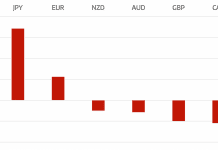
The 2008 financial crisis drastically tarnished the reputation of hedge funds and, as a result, the entire investment climate changed. The investment in securities has become more accessible for the average investor due to greater competition from alternatives and the traditional asset management organizations, increase in liquid alternative funds, implementation of the JOBS Act, and a wider knowledge about investment in general. All these combine to ensure that the hedge funds face higher scrutiny and more opportunities.
Since the 2008 crisis, a large quantity of net asset flows from hedge funds have gone to a small proportion of hedge funds with the strongest brands. A brand is defined as the investors respective perception of the general quality of a particular hedge fund and its market position. Hedge funds typically require an easily comprehensible brand name that is not only attractive, but also appeals to the investors (existing and potential) and possible clients. Getting a high quality brand usually takes a long time but, once achieved, it can substantially increase the firms ability to generate capital and maintain assets during a performance drawdown.
Branding can be a tricky issue for hedge funds due to the stiff competition, what with an active number of 10,000 hedge funds globally. Hedge fund investors face a barrage of requests, phone calls and emails from various investment managers. To narrow down the information overload, the investors rely on the brand when selecting which funds to meet and eventually invest in. In order to create a brand name, hedge funds need to first identify the brands position in the marketplace and then employing an integrated communications strategy that is coupled with a traditional marketing plan, which includes things like media interviews,) and some aspects of new-age marketing, such as content creation.
Nowadays, sophisticated investors do not deem the performance of fund managers as the instrumental factor in selecting them. The fund managers need not only have a great performance record but also be able to market themselves in a way that gains investor trust. No longer do investors just go to large hedge fund managers, as they perceive them to have diluted their alpha over the span of a large asset base and have accumulated a vast number of assets. Small and mid-sized managers represent a greater proportion of the hedge fund industry now.
The three integral steps to creating a strong brand are:
- High quality product offered: According to research conducted of scores of hedge funds by Agecroft Partners, most of the hedge funds are not that good as per multiple evaluation factors. Low-quality hedge funds are unclear about the evaluation factors that investors utilize to choose hedge funds; thus, they are not able to offer a superior quality offering. These factors include evaluation of a companys operational infrastructure, investment group/team, risk controls, investment process centered on their differential advantages and performance. A shortcoming in any of these can lead to a firm losing out with potential investors.
- Markets perception of the firm is true: This means that the investors should perceive the firms products to be of superior quality, implying that the product is consistently delivered, precise, and comprises a linear marketing message that examines the differential benefits across all of the various evaluation factors that investors normally use to select the best hedge fund. This is one reason why many high-quality hedge funds do not generate more investors: their message is not sufficiently articulate for the marketplace.
- High focused marketing and sales strategy: A strategy that widely penetrates the marketplace whilst being compliant with the regulatory guidelines is the last step to building an influential and strong brand. The hedge fund marketplace is extremely interconnected as investors exchange ideas pertaining to managers freely. Hence, the deeper the fund manager penetrates the marketplace, the stronger the brand would be.
Creating a strong brand is a slow process and cannot be rushed, as it entails raising assets. The industry is not transaction-oriented. In some cases, being aggressive can lead to the firm being excluded from the investor selection process.
Related Posts:
Guide to Hedge Funds and Branding – Part 4 Hedge Funds Trends
Guide to Hedge Funds and Branding Part 3 Hedging and Investment strategies
Guide to Hedge Funds and Branding Part 2 Introduction into Industry
Guide to Hedge Funds and Branding Part 1 What is a Hedge Fund?
HedgeThink.com is the fund industry’s leading news, research and analysis source for individual and institutional accredited investors and professionals






































